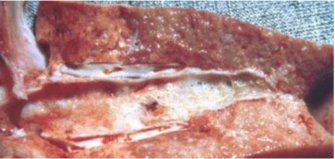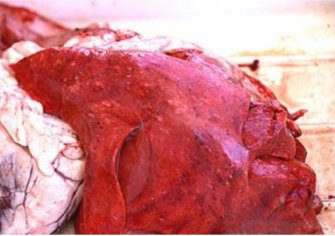There are three species of lungworm that occur in sheep or goats in Australia. They are the large lungworm, Dictyocaulus filaria, and the small lungworms, Muellerius capillaris and Protostrongylus rufescens. These parasites prefer cool conditions. The requirement for a developmental stage in slugs or snails restricts Muellerius and Protostrongylus mainly to cool, mountain regions.
The life cycles of lungworms are slightly different from most round worms.
Dictyocaulus filaria: Adult females (located in the bronchi of the lungs) lay eggs containing larvae. Eggs are coughed up, swallowed, and hatch as they move through the digestive system. First stage larvae are then passed out in the faeces. They develop on pasture and are eaten by sheep or goats. Larvae move through the intestinal walls and travel to the lungs.
Muellerius capillaris and Protostrongylus rufescens: Eggs that are laid in the nodules of the lung tissue (M.capillaris) or in the airways (P. rufescens) by the adult worms hatch and the larvae wriggle up the bronchi to the throat. These first stage larvae are then swallowed and passed out in the faeces where they can infect snails or slugs, in which they develop (this is an indirect life cycle). Infection occurs when the sheep or goat eats a slug or snail. Larvae travel through the tissues from the intestinal tract to the lungs.
See an animation of the life cycle of this worm.
Dictyocaulus filaria is found in the bronchi of the lungs, whereas Protostongylus rufescens is in the smaller bronchioles and Muellerius capillaris is deeply embedded in the tissues of the lungs.
Lethargy, weight loss, nodular lesions (lungs), coughing and pneumonia.
Lungworms irritate the lining of the airways. The main sign of lungworm infection in sheep or goats is coughing. Infected sheep or goats may also have reduced weight gains. At post mortem examination white, thread-like worms are clearly visible either in the airways or in shot-like nodules under the lung surface. Some nodules may contain pus rather than worms.


Diagnosis is not easy. Generally, clinical signs such as coughing are used, and, where possible, just passed faeces is collected for recovery of larvae using a Baermann apparatus. Lungworms can also be identified at post mortem examinations.
All broad spectrum drenches will remove lungworms. No drench resistance has been reported.